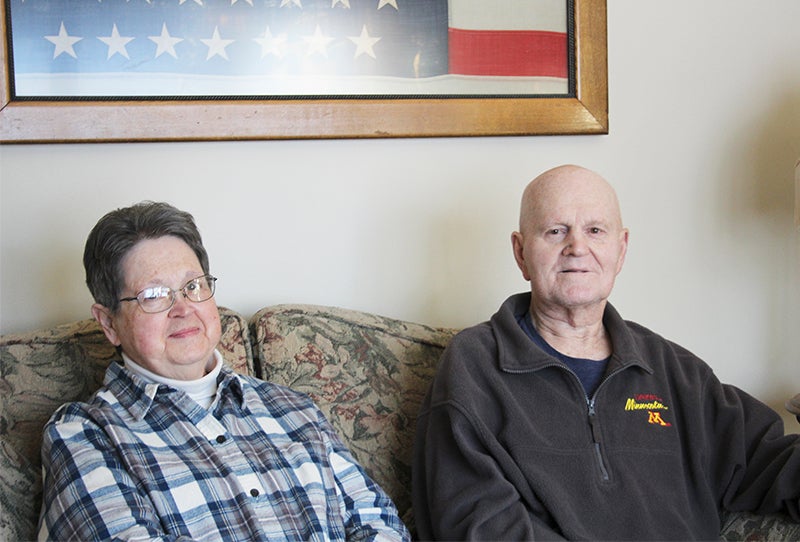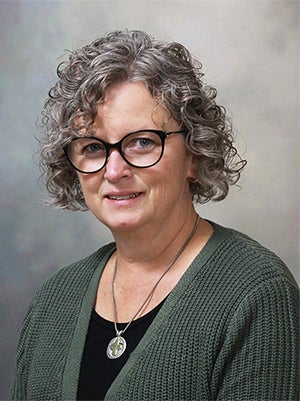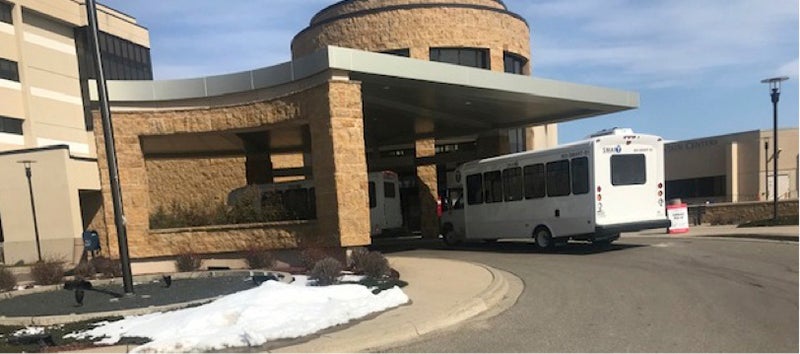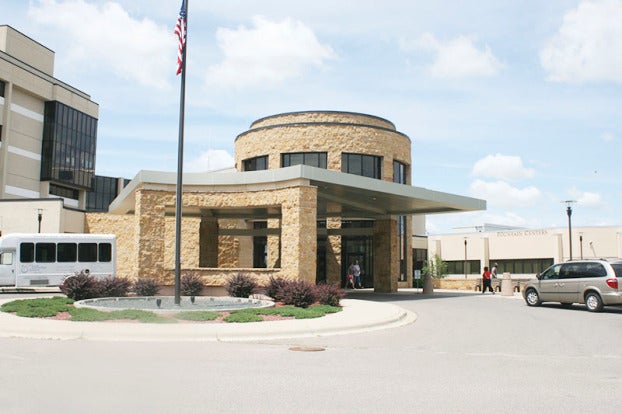Albert Lea man overcomes dismal pancreatic cancer diagnosis, has been cancer-free since 2017
Published 5:10 pm Thursday, February 2, 2023

- John Lang sits on the sofa with his wife, Carol, in their home in Albert Lea. Lang has been pancreatic cancer-free since 2017. Alex Guerrero/Albert Lea Tribune
|
Getting your Trinity Audio player ready...
|
Call it an anomaly. Call it a miracle. Call it fate. But whatever it is, it’s good news: John M. Lang is cancer-free.
Diagnosed with pancreatic cancer in June 2016, his first reaction was deciding whether to believe what he was being told.
“We see cancers and stuff with everybody,” he said.
“We had been at a graduation open house on a Sunday,” said Carol Lang, John’s wife. “We were sitting outside sitting across the table from him, and I looked at him and I go, ‘How long have your eyes been yellow?’”
After they arrived home, she noted his chest was also yellow.
So he went to Mayo Clinic Health System in Albert Lea, where staff performed several tests. But even before the tests, when he walked in Renee Haugsdal — the first person to see him after he walked into the doors — thought she knew what was wrong with him.
But he couldn’t get into Mayo Clinic in Rochester immediately.
“The following first week I was feeling so rotten that I went back up to urgent care up here and they proceeded just to send me down to emergency,” John said.
Once there, staff performed several tests, and the doctors eventually came to a conclusion and asked him when his appointment in Rochester was before transporting him over there, where they ultimately performed more tests, as well as a biopsy, to confirm a cancer diagnosis.
“When we were in the office with [the doctor], when he confirmed that it was pancreatic cancer, we already knew what it was, we were 99% sure,” Carol said. “The thing that was so hard was he looked at us and he said, ‘You have three to six months to live.’”
But the doctor also said John could do chemo and radiation therapy to shrink the tumor.
“As of right then the tumor was so large it was on the main artery and the main vein and they could not do surgery then,” Carol said.
John elected to begin the treatment in Albert Lea, and described the workers at Mayo Clinic Health System Albert Lea as “great” and said he got to know them.
“You’re not just a number, you’re a patient,” John said.
He had a Peripherally Inserted Central Catheter line inserted into his right arm, which was used to deliver the cancer treatment, and John noted there were 33 inches of PICC line.
“It was a matter of that or wait until they could schedule to put a port in my chest to do the chemo,” he said.
They also decided to start treatment in Albert Lea because they worried John would be too weak to travel. In fact, John lost 100 pounds during treatment.
Treatment started in July 2016 and ended in February 2017 and included 25 radiations.
“At the same time I was taking pills that were supposed to be the equal of the chemos that I had taken,” he said.
There were 12 chemo treatments and 25 chemo-radiation treatments.
“That was a really rough chemo,” he said.
Following treatment, there was a 12-hour Whipple surgery in March 2017 after a followup appointment.
“I didn’t have time to think about it, which is good that I don’t have the time to sit and think about it,” he said.
“There aren’t a lot of people that qualify to do the Whipple surgery because they just can’t shrink the tumor enough to do it or something,” Carol said. “The survival rate at that time for pancreatic cancer was only 6%.”
The next morning following the surgery, the doctor told him what he had previously told his family.
“Dr. [Michael] Kendrick says, ‘If it all goes well … your incision from your [previous] gallbladder surgery is going to look a lot different then your surgery for pancreatic cancer. There will be five small holes [and that] will be all there is.’”
And that’s how John ended up, with five small holes, all of the cancer removed and about half of his pancreas, they estimated.
“After having been told by the cancer doctor that you’d first seen and that you were given three to six months to live, and they’re telling us that, it’s a very positive type feeling or attitude that you’re dealing with,” he said.
John has remained pancreatic cancer-free, with his last appointment two weeks ago.
“Now they’re scheduling it out to a year before I go back and see Dr. [Mina] Hanna again,” he said.

Kellie Peterson, currently the Southeast Minnesota Infusion Oncology Nurse Manager for Mayo Clinic Health System
Kellie Peterson, currently the Southeast Minnesota Infusion Oncology Nurse Manager and Lang’s chemotherapy nurse, worked with him throughout treatment and then again as needed.
She didn’t have an explanation for why the cancer disappeared, other than saying his treatments worked better for some patients than others.
She was happy to see his cancer disappear.
“To know this treatment works, how strong he was through it all, [I’m] just happy beyond words,” she said.
In her 18 years of work, Peterson said she’s seen one other case like John’s, and she was happy for him and his family. She was thankful to John for letting her be a part of his fight, and noted being a part of his journey was rewarding for her as a nurse.
“Keep on living and fighting,” she said. “Enjoy life.”
It’s not all smooth sailing, however. John takes 18 daily medications every morning, six at noon and another six to eight at night. And he no longer goes out to eat for fear of how his stomach will react to food.
Because of the radiation, he’s also visiting the dentist more often.
But he wanted to thank the team at Mayo for working the way they had.
“It’s been an honor to have them take care of me the way they have,” he said. “… Thank you for the interest you’ve shown in me and taking care of me.”
“You have to think positive because you don’t know what’s going to happen tomorrow,” Carol said. “Cancer isn’t always good, but it isn’t always bad. What he’s been through is not fun but he’s been here for over six years. I wouldn’t have had him if he’d been in a car accident and died back then.
“I’ve had him for six years, which wasn’t guaranteed.”
Before retiring, Lang worked in gas utilities, though he did dabble in electric utilities.




